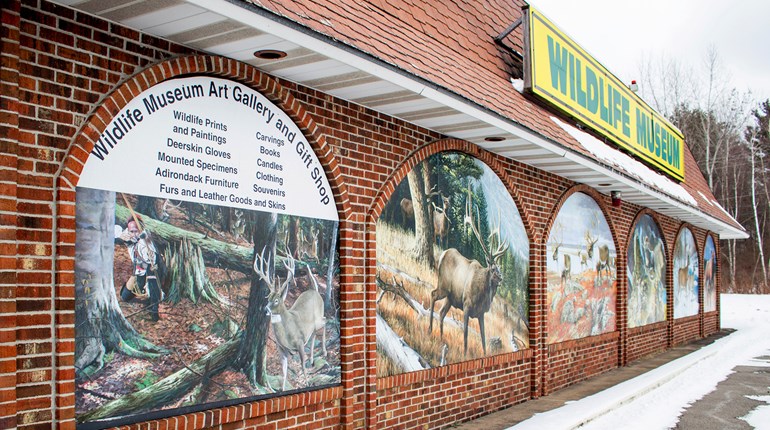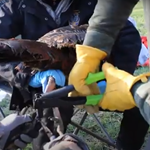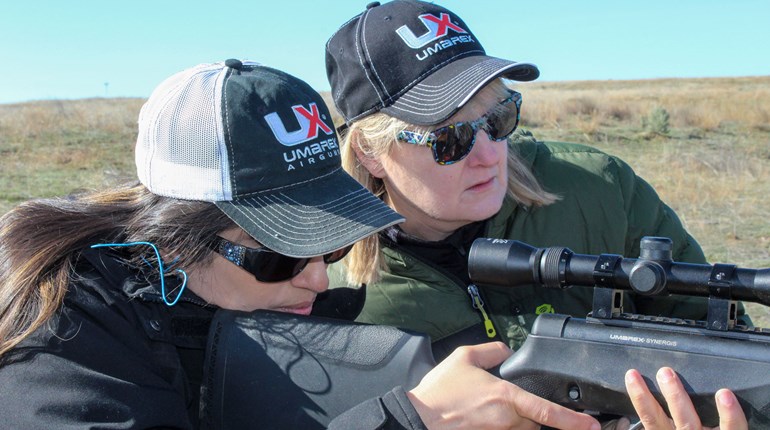
Some today may think the mounting of game animals and fish macabre, but sportsmen and women consider it an art form, a way of preserving hunting and fishing memories. Regardless of varying opinions on the topic, taxidermy has been practiced for millennia. In Egypt, for example, mummified apes, cats, dogs and even human slaves have been found alongside the bodies of ancient kings. Today, an estimated 35,000 taxidermists—both professionals and amateurs—practice their craft in the U.S.
The word taxidermy is derived from two Greek words: taxis (movement), and derma (skin). And that is precisely the modern taxidermist’s goal, to take the skin of a dead animal and once again give it the appearance of movement, of life. It is no easy task, and involves extensive knowledge of anatomy, biology, chemistry, design, art and natural history. In essence, it’s preserving the wild.
Casey Watterson is a master of the craft. His studio, Lone Leaf Custom Taxidermy (www.loneleaftaxidermy.com), is located on his family’s farm near Mt. Gilead, Ohio. He enjoyed both hunting and fishing as a kid, and explained how those outdoor interests led to a fulltime career in professional taxidermy.
“I graduated from the Pennsylvania Institute of Taxidermy in 2001, which was a 900-hour course in four disciplines: birds, fish, life-size (full-body mounts), and big-game heads,” Watterson said. “World-champion taxidermists taught each phase of the instruction, so I received excellent training. But one of the biggest benefits was the business courses the school offered, because the business management aspect of running a professional taxidermy studio is very important. You can be the best taxidermist in the world, but if you don’t know how to generate business, price your work competitively and manage money flow, you’ll be out of business or burned out within five years.”
After graduation, Watterson developed a business plan and then built a taxidermy studio containing a showroom, skinning room, finishing room, paint booth and office. His goal was to separate himself from other taxidermists by not only turning out quality work, but also by presenting a professional-looking studio. His business strategy paid off, and today he is one of the Midwest’s most respected taxidermists.
For someone considering a career in taxidermy, Watterson suggests job shadowing for a day or two, and doing so with more than just one taxidermist, if possible. “If you enjoy that experience, then finding a good, accredited taxidermy school to attend is the next step,” he said. “And plan on continuing your education throughout your career.” Watterson added that each state has a professional taxidermy association, which would also be a good place to learn more about the career of taxidermy.
The downside of the job, according to Watterson, is that during the hunting seasons when everyone else is in the field enjoying themselves, a taxidermist is in the shop working. “People often think that if they become a taxidermist they’ll be able to spend more time outdoors hunting and fishing, when just the opposite is true,” he said. “To be successful, a taxidermist must put in long days and occasionally some long nights, too.”
One of the benefits of being a professional taxidermist is being your own boss. “I enjoy the flexibility of hours the job provides,” said Watterson. “I’m a father with a wife and two young kids, and being a big part of my family’s lives is important to me. For instance, I coach my son’s baseball and basketball teams, and having regular working hours would preclude that.”
If you don’t care about working for yourself, or maybe can’t afford the start-up costs of opening your own shop, some larger studios hire people just out of taxidermy school. Natural-history museums also hire taxidermists and may have apprenticeship positions available.
Watterson has mounted more than 1,200 white-tailed deer heads thus far, but still doesn’t consider that animal his specialty. “What I really enjoy working on are fish and wild turkeys,” he said. “I like fish because I really enjoy the challenge of painting them, making them look alive. I spray-paint layer after layer of colors to give them the appearance of depth. I’ve spent as much as16 hours painting just the eyes of walleyes to get them the way I want them. It’s the challenge of taxidermy I feed on—that’s what excites me. Making a dead animal look life-like again is what gives me a rush.”
To accomplish what he does, Watterson said having some art talent is very helpful. “A good taxidermist is really a wildlife artist,” he said. “Every project is different, and every client is different. What I try to do is create a custom-designed piece of taxidermy for each particular client. The ultimate satisfaction from my job comes when the client returns to pick up his/her mount and is extremely pleased with my work. And I know for sure that I did a good job when clients bring me their additional trophies.”
Watterson has been in business for 17 years and has seen his business grow some 60 percent in the last two years alone. “I won’t kid you, the first few years were really challenging financially, getting the business off the ground,” he said. “When I started I was the most expensive taxidermist in the area, and some people choose a taxidermist based simply on price, which is a mistake. But I was determined not to give up, and my persistence eventually paid off. Today, my taxidermy business is not only successful, but I’m now asked to attend taxidermy competitions to judge and teach. I had to work my way through the ranks to accomplish that. As with most any career, there are no shortcuts.”
But professional taxidermy is not all hard work; it does have has its lighter moments. For instance, some people just don’t know what taxidermy actually is.
“I had a guy call me once wanting a taxi cab ride,” said Watterson. “Other people have called wanting to bring me their income taxes for preparation. But the guy who takes the cake was a client who brought in a white-tailed deer head for mounting and told me he’d just wait in my showroom until it was done. I told him that would be a long wait. I’m good,” said Watterson, grinning, “but I’m not that good. I then explained the entire taxidermy process, and that it would probably be six months before his deer head was ready for pickup.”
Even if you may not be interested in taxidermy as a career, Watterson has several suggestions for sportsmen and women that will make your trophies easier for a taxidermist to work on, saving you money.
- Keep the animal skin or carcass cool and dry, and get it to a taxidermist as soon as possible, within a day or two of harvest.
- Heat and moisture promote bacterial growth, so avoid those conditions because they cause hair slippage. Freezing is a good way to stop decomposition.
- The fewer cuts you make on the head or hide of an animal the better, as that is less damage the taxidermist has to repair.
The future for Casey Watterson and Lone Leaf Custom Taxidermy includes opening both a taxidermy supply company and taxidermy school, beginning in January 2018. The school will be open to professionals, amateurs and even interested sportsmen. If you’d like more information, Watterson can be reached by email at [email protected].
Some Taxidermy Oddities…
- Arsenic was once used extensively by taxidermists to preserve animal skins. As a result, some early taxidermists were sickened or even died from arsenic poisoning. Surprisingly, arsenic is still used today in taxidermy for some specialized purposes.
- U.S. President Thomas Jefferson had Meriwether Lewis tutored in taxidermy in Philadelphia before sending him west with William Clark in 1804 on the famed Lewis and Clark Expedition. Some of Lewis’ mounts still exist today.
- The 19th Century showman P. T. Barnum had his famous elephant, Jumbo, mounted after the animal was accidentally hit and killed by a train in 1885. Just the hide of the huge elephant weighed an estimated 1,500 pounds.
- Theodore Roosevelt, the 26th S. president, practiced taxidermy. Some of the birds he mounted as a boy are still on display at his birthplace in New York.
- Pet taxidermy was popular in 19th Century England. No proper Victorian home was complete without a glass display case filled with mounted cats, dogs and birds.





































